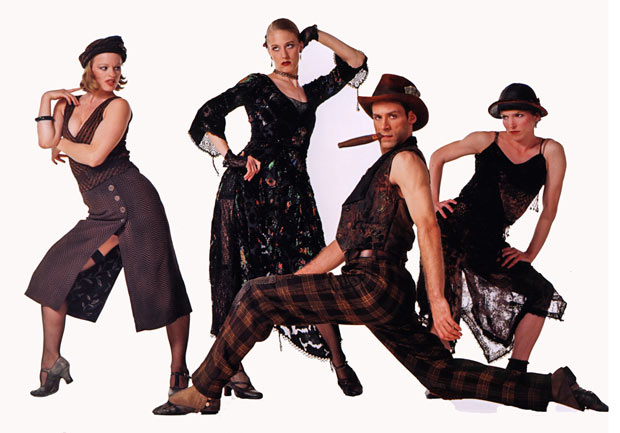
© Lois Greenfield. (Click image for larger version)
Paul Taylor Dance Company
Perpetual Dawn, Private Domain, Black Tuesday
Boston, Schubert Theatre
1 November 2013
www.ptdc.org
www.celebrityseries.org
The Paul Taylor Dance Company arrived in Boston on November 1 for three performances courtesy of Celebrity Series of Boston. They were last here in spring of 2006, far too long an absence for one of the world’s most thrilling dance ensembles. Taylor, now 93, will mark 60 years of choreographing next March with the premiere of his 140th work at Lincoln Center. And what a career it’s been! You can discard the greater part of most artists’ work with little or no loss (at least 9/10th of Whitman and William Carlos Williams would never be missed, along with three fourths of Wordsworth and Dickinson), but most of Taylor’s work is of an amazingly high standard and makes a permanent contribution to modern dance. He is, in short, a giant and an American national treasure.
The program consisted of three pieces spanning over four decades of Taylor’s career: Perpetual Dawn (2013), Private Domain (1969), and Black Tuesday (2001). Like many Taylor dances, Perpetual Dawn provides lots of high-energy, buoyant movement from the start. Its six parts are set to movements from the Dresden Concerti by the Baroque composer David Heinichen. Save for a lyrical pas de deux toward the end (beautifully performed by Michael Trusnovec and Laura Halzack), the choreography displays high-octane athleticism. While watching it, it occurred to me that Taylor has probably created more joy on stage than any other choreographer in the history of dance, and also that certain movements have by now become trademarks of his style, his personal claim on the human body as it were, a kind of choreographic signature. I’m thinking of high, rapid, turning leaps with both arms raised and also that quintessential Taylor step in which a dancer on one foot (usually a man) leans back with arms raised wide and the other leg raised as if preparing to leap forward. Such movements always affect me like embraces, affirmations of life and expressions of pure joy.
Perpetual Dawn is sprinkled with wit throughout, as when dancers raise one knee high and flex a foot in an image of hillbilly hokum, or when dancers echo each other’s movements in a kind of visual tag. The dance also shows Taylor’s skill in creating dance drama. At one point, several couples run diagonally across the stage, but the moment we become accustomed to the image, a single woman appears creating instant curiosity and tension. By changing from one dancer to many, or many to one, or couples to a soloist or a trio, or a soloist to an ensemble, Taylor creates a sense of continuous theatricality. All in all, Perpetual Dawn is a likeable piece even though it lacks the marked strangeness and oddity which invigorate Taylor’s best work.

© Paul B. Goode. (Click image for larger version)
I’m guessing that Private Domain is a work of special significance for Taylor since he used its title for his autobiography published in 1987. It has many fans but unfortunately I’m not among them. From fairly early in Taylor’s career (1969), it’s a reminder that he danced with Martha Graham for seven years, for the dancers are often pulled down by gravity, they use their pelvises a lot, and they spend a good deal of time on the floor. For me, the piece was a muddle of disparate movement without stylistic coherence. The dancers ran and jogged, hopped and skipped, sped in circles upright and on the floor, flexed upraised hands like spastic semaphores, shimmied their hips and ground their groins, paraded like convulsive insects and Egyptian friezes. The set by Alex Katz was maddening in that it obscured the performance. Two wide black side panels took up a third of the stage; the rest was trisected by two more black panels, thus creating three apertures which together revealed maybe half the stage. For much of the piece, you saw only parts of bodies and glimpses of movement. Even when taking their bows you couldn’t see all the dancers. My companion thought the point of such obscured vision might be to convey the same sense of fragmentation expressed in the ultra-modernist score by Iannis Xenakis (Atrées), but for me that’s like a novelist who bores a reader to convey a sense of boredom in a character.
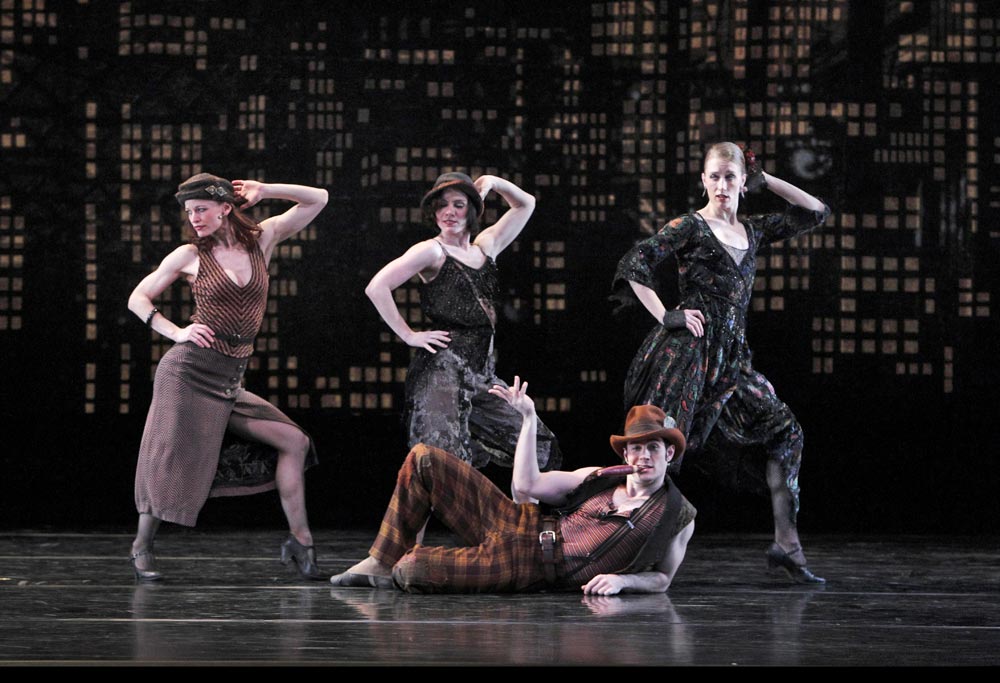
© Paul B. Goode. (Click image for larger version)
Black Tuesday is a largely lighthearted piece about a heavy-hearted subject: the lean times of the American Depression. It’s set to eight popular songs of the period which range from spunky upbeat melodies and fast rhythms to more somber music like The Boulevard of Broken Dreams. Santo Loquasto’s sets (the Manhattan’s nighttime skyline and overhead elevated subways) were visually arresting and his poverty-chic costumes a delight. One bare-chested man wore a vest and a Fedora; another appeared in top hat and tailcoat with spats but no pants, just gray boxers and garters. One woman performed in an Apache dance outfit replete with beret, and a pregnant woman wore a décolleté housecoat. The petite Jamie Rae Walker in her street urchin get-up wowed the crowd with a sharp, crisp solo in “I Went Hunting and the Big Bad Wolf Was Dead.” Wearing state trooper jodpurs, the unfailingly great Michael Trusnovec was the panhandler of “Brother Can You Spare a Dime,” and the finest single effect of the evening occurred in the last moment of that piece when all 13 dancers on the apron of the stage extended their hands into a shaft of golden light.
Not the least of Taylor’s genius shows in his choice of dancers. All are superb performers who are also quite handsome to look at. If I were asked to populate an alien world from scratch, I’d begin with the Paul Taylor Dance Company.







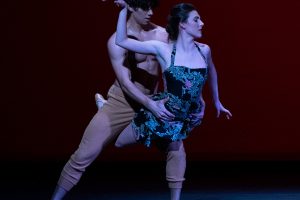




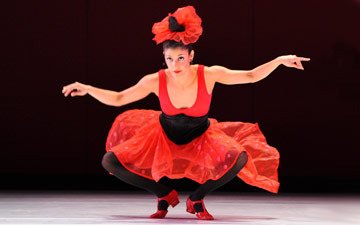

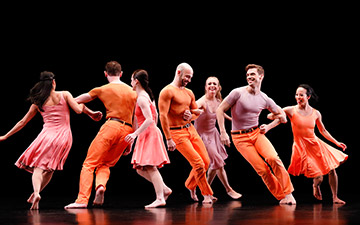
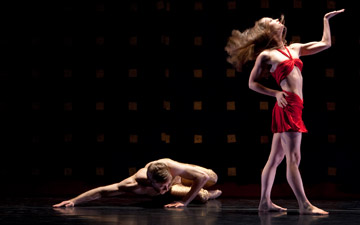
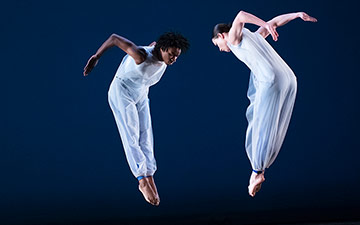
You must be logged in to post a comment.